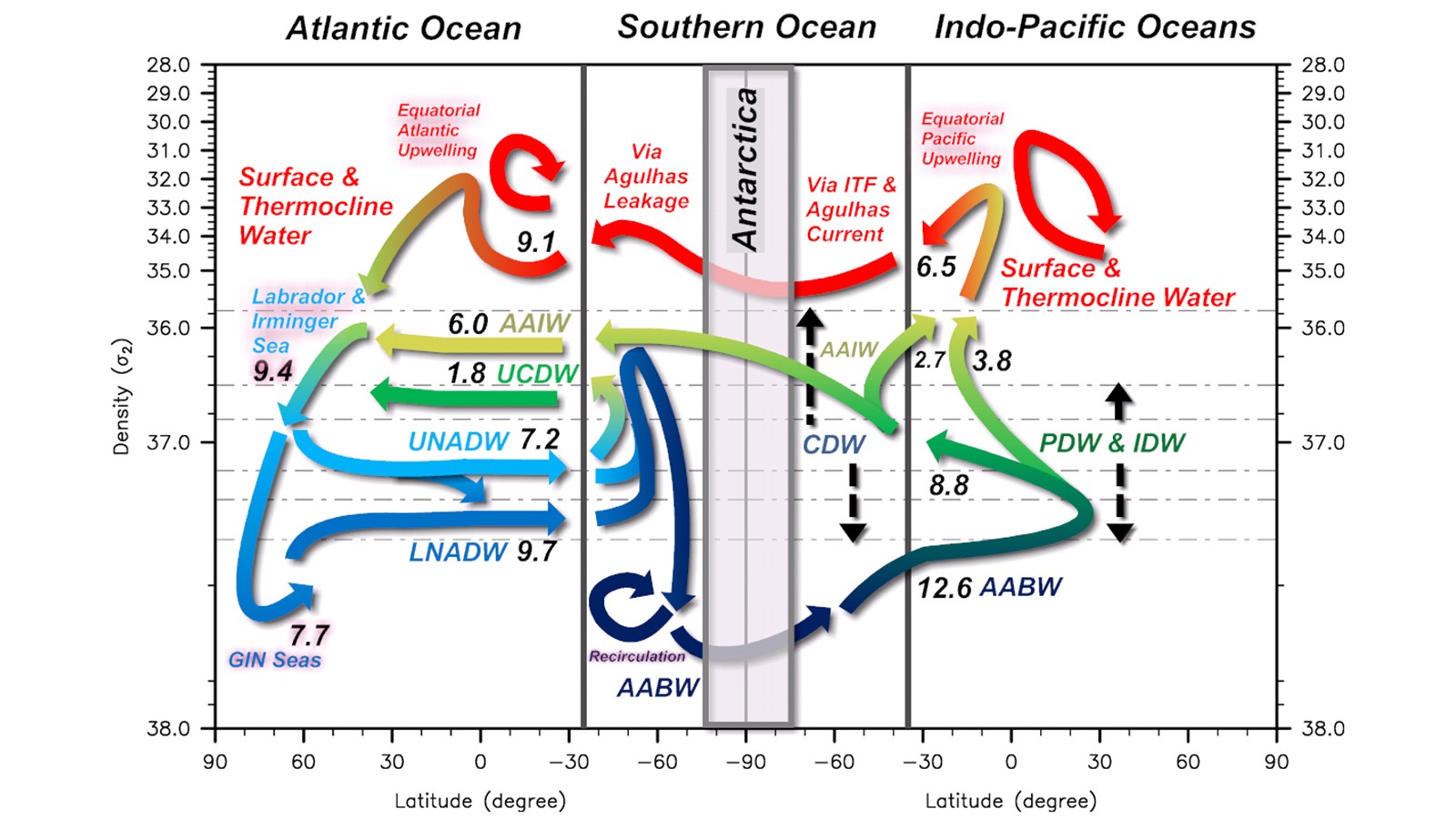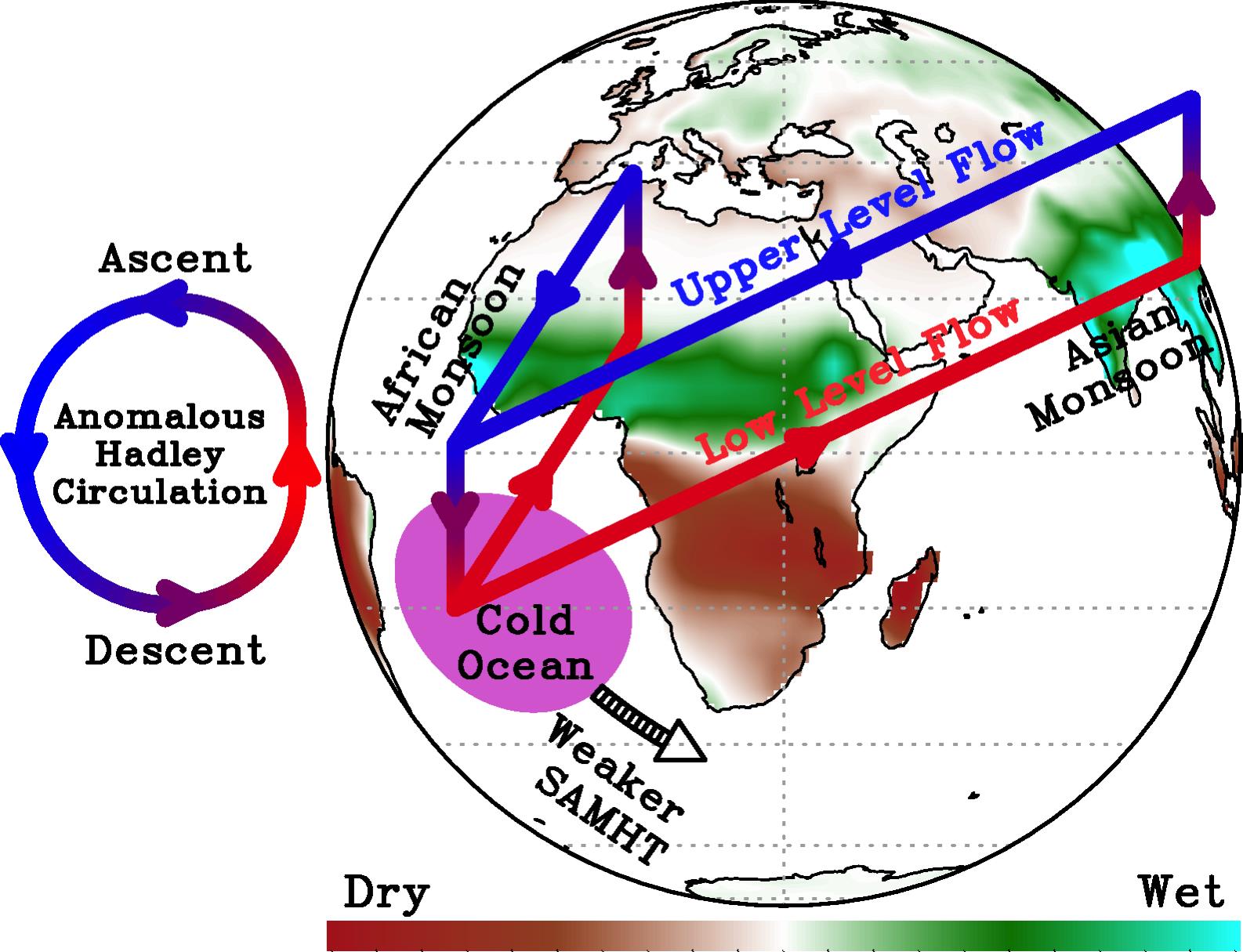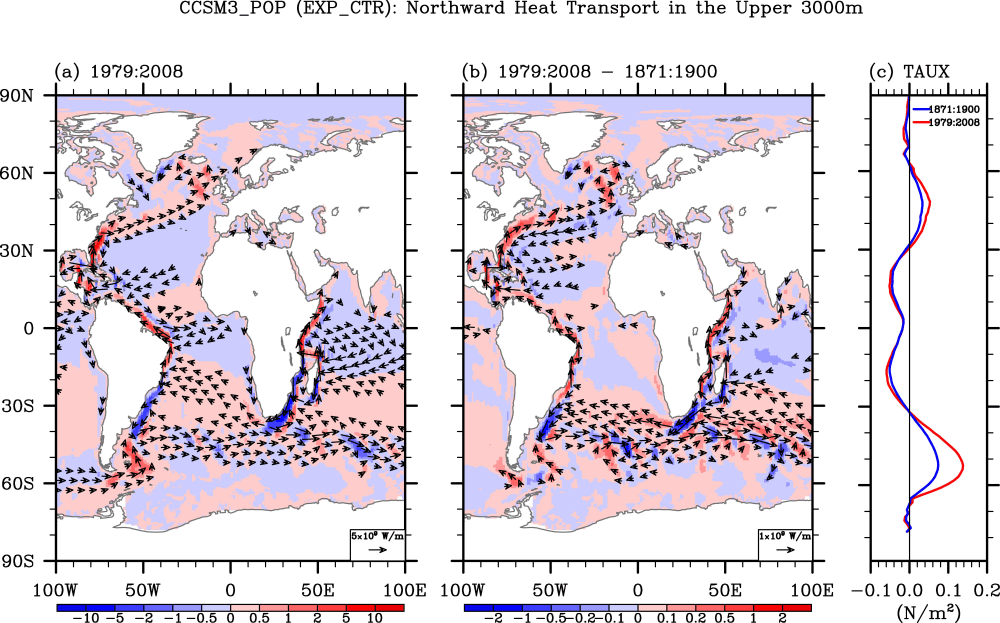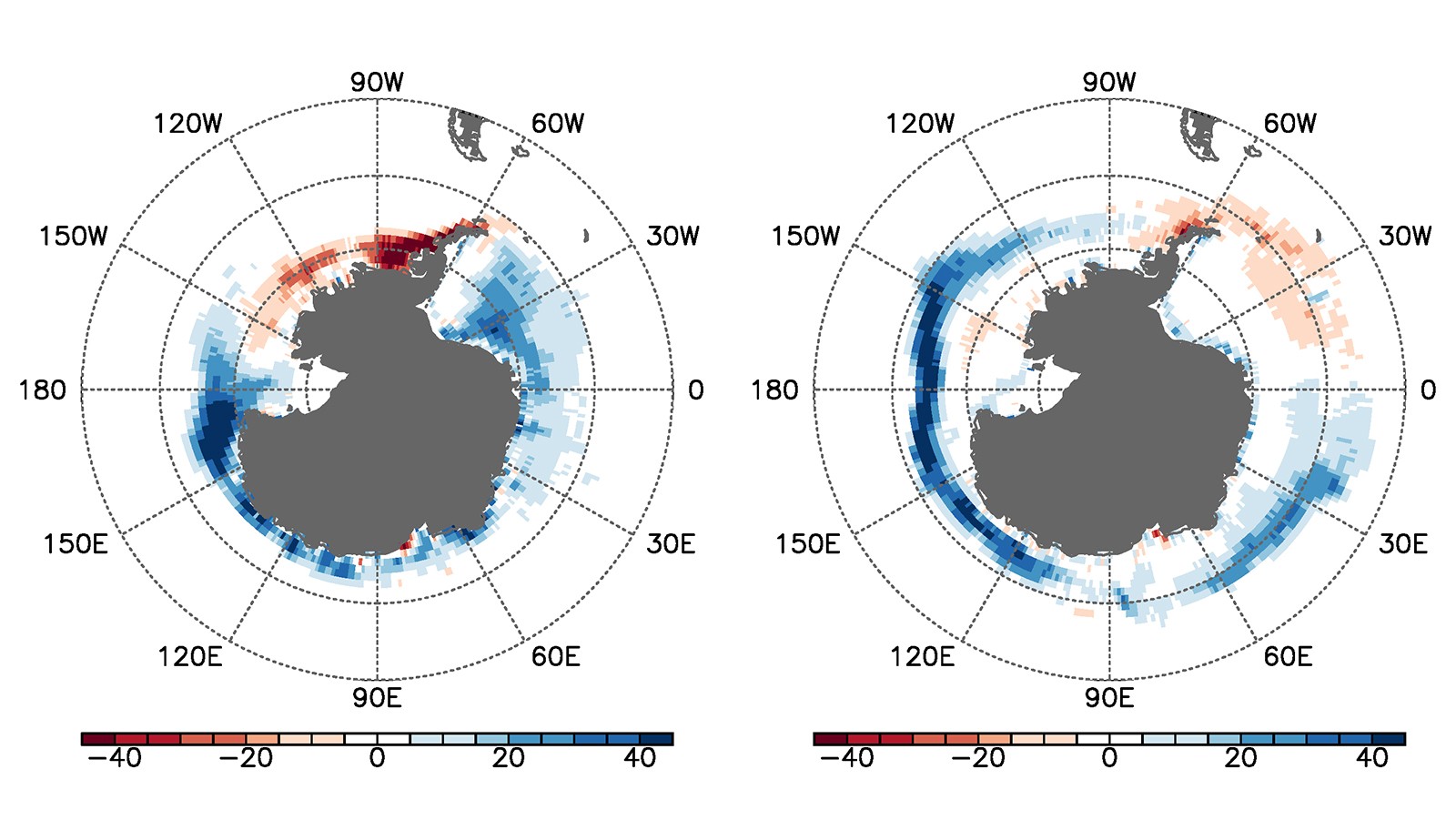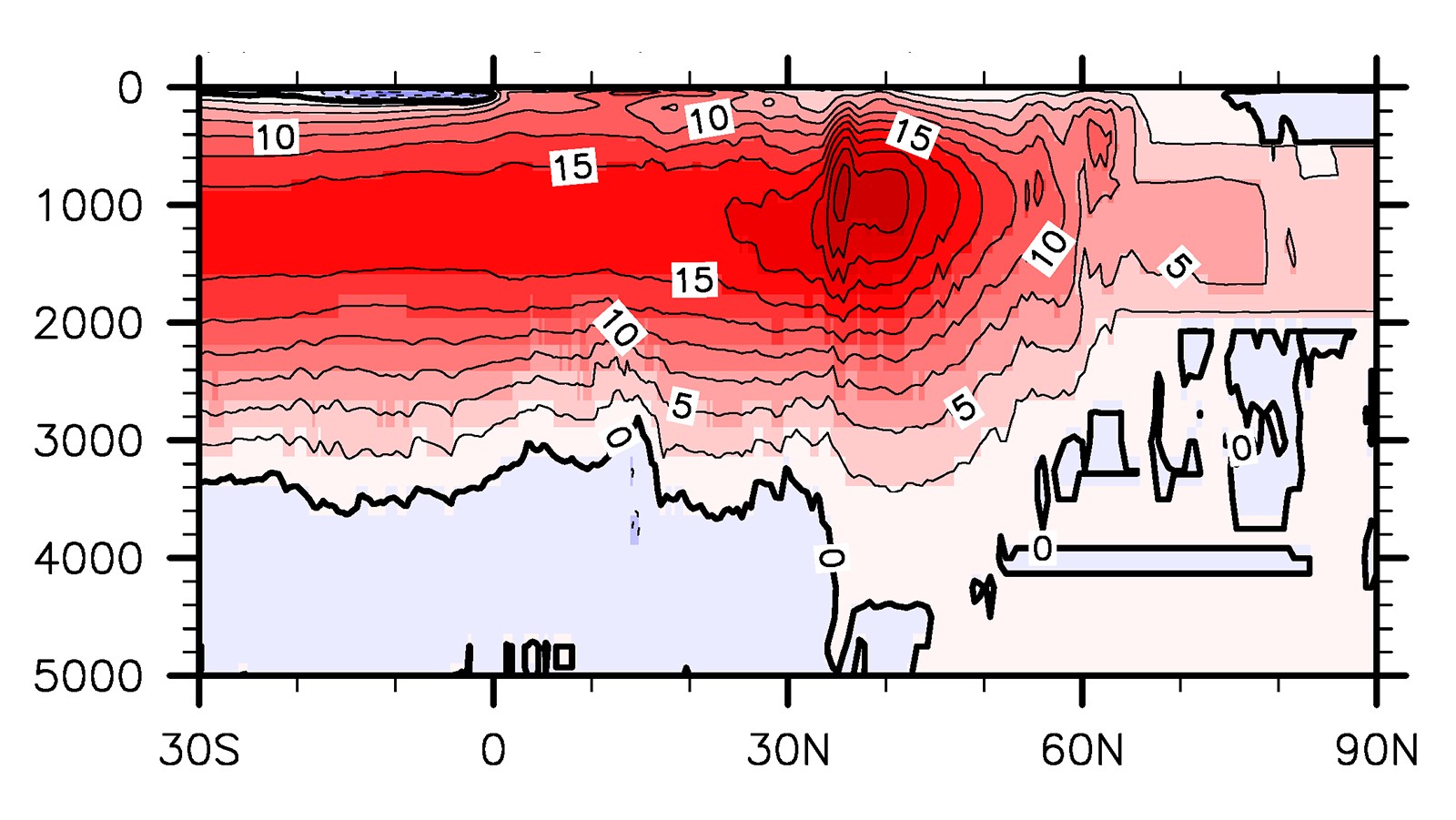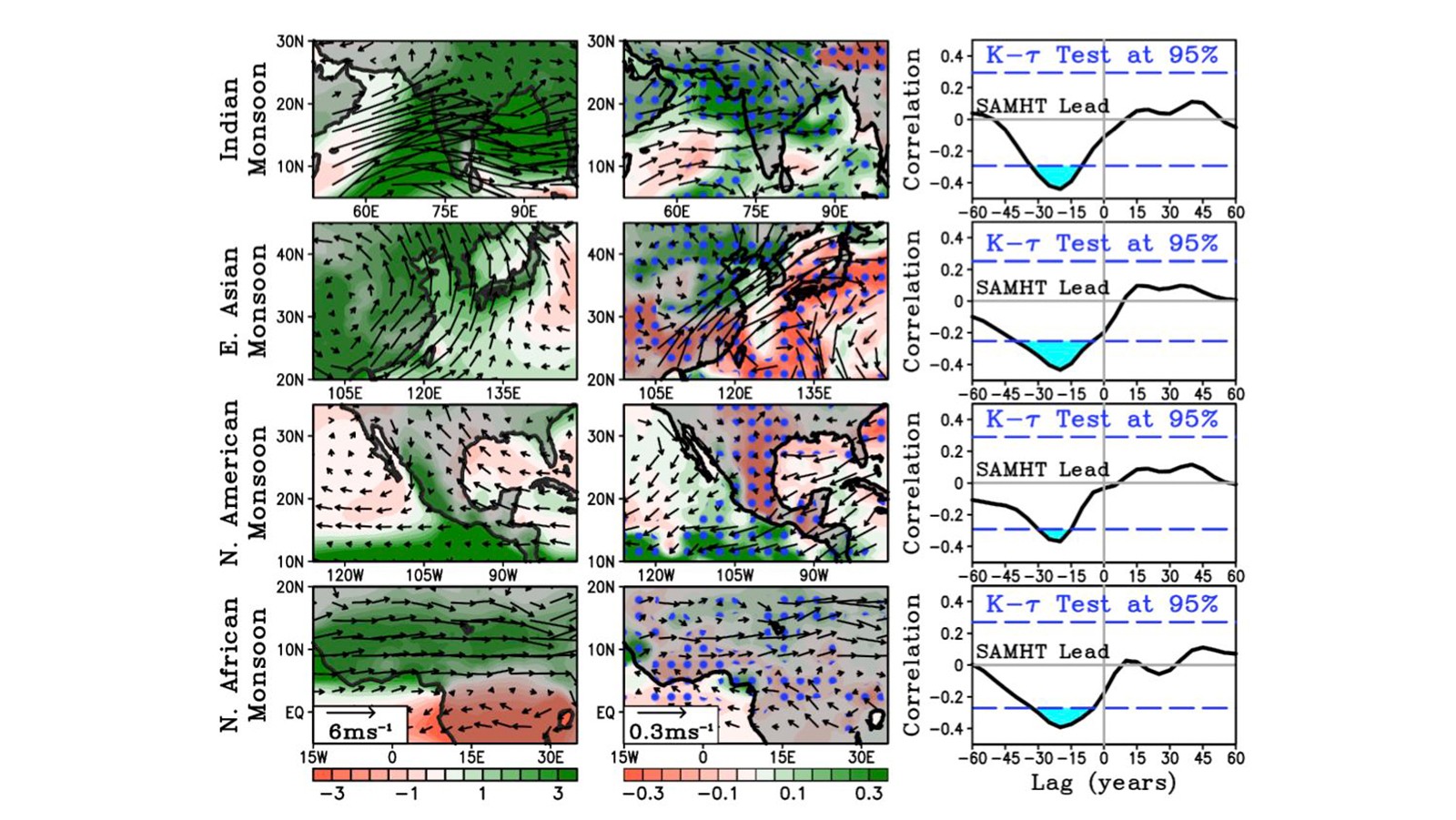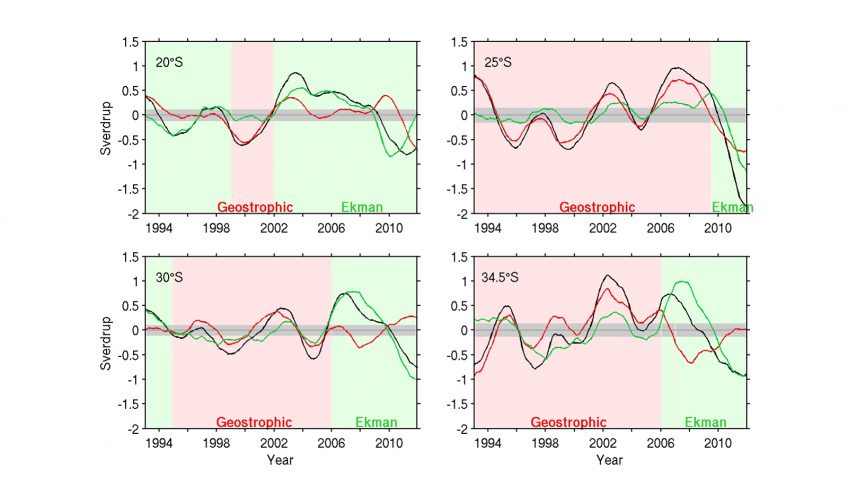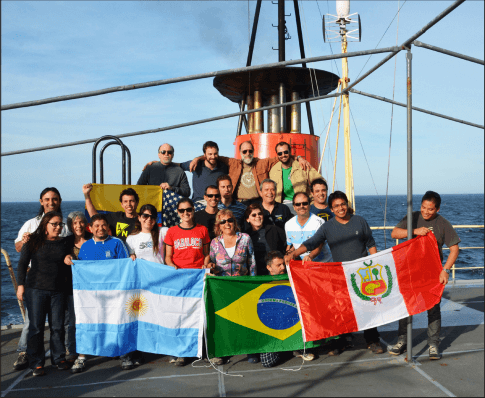Global Meridional Overturning Circulation Revisited
Ocean tracers such as heat, salt and carbon are perpetually carried by the global meridional overturning circulation (GMOC) and redistributed between hemispheres and across ocean basins from their source regions. The GMOC is therefore a crucial component of the global heat, salt and carbon balances.
